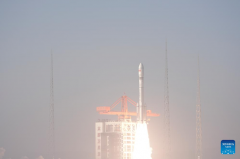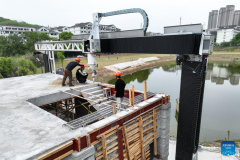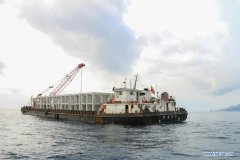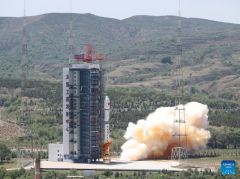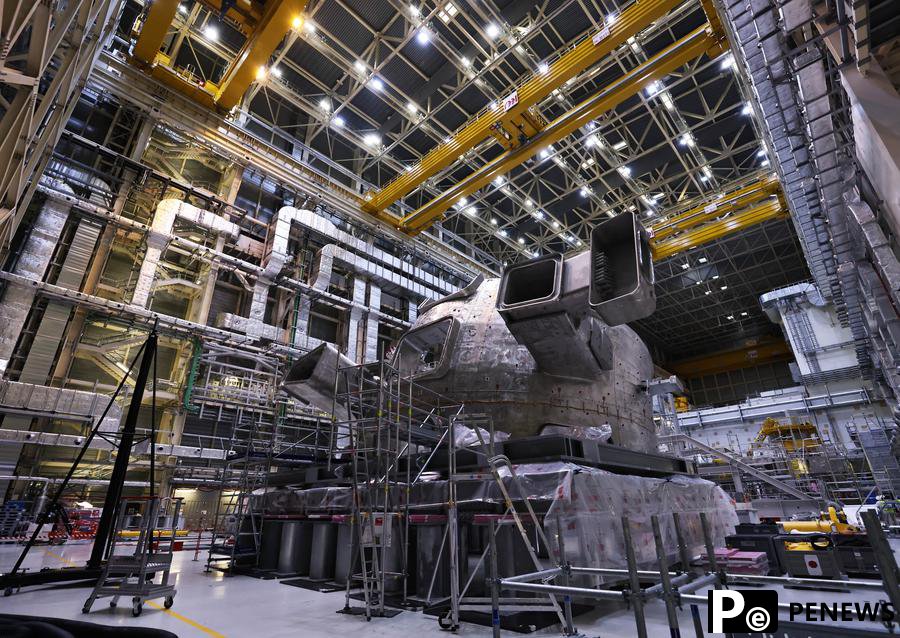Home>>
Space rescue: Chinese astro-engineers share a satellite-saving mission that spans 123 days and covers 8.5 million kilometersBy Huang Lanlan (Global Times) 09:45, May 07, 2025
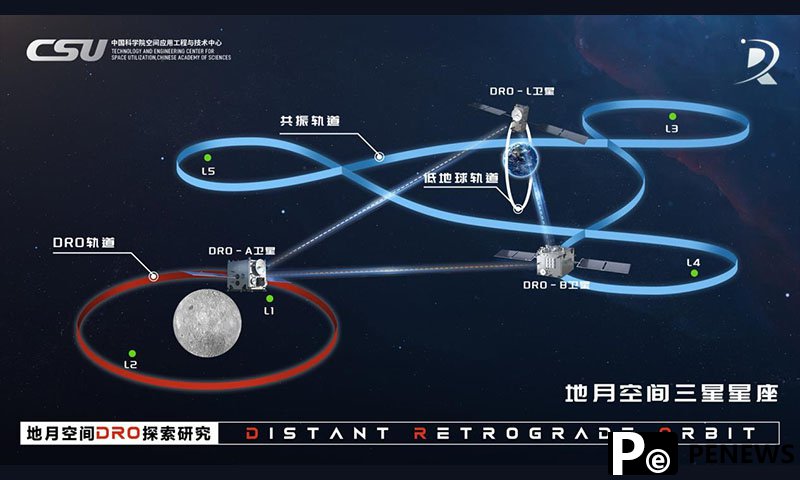
"Together, they will form a lighthouse or a beacon for further deep space exploration by us," Zhang, a research fellow at the CSU, told the Global Times.
However, shortly after the launch that evening, news of an "anomaly during the DRO-A/B satellite launch" drew public attention: While the first and second stages of the rocket flew normally, the upper stage, which is directly responsible for placing the satellites in their designated orbit, experienced an anomaly, resulting in the satellites not reaching their intended trajectory.
Zhang, responsible for orbital design and mission planning in this project, recalled details from that moment in the mission control center. At about 11 pm, signaling the imminent separation of the satellites from the rocket, the parameters representing the apogee height on the large screen suddenly fluctuated violently: The apogee height, which was supposed to steadily increase to 292,000 kilometers, instead oscillated like a roller coaster at just 150,000 kilometers.
Yin Yongchen, a third-year doctoral student at the University of the Chinese Academy of Sciences (UCAS), is one of the Gen Z members of the project team. That night, the 24-year-old, who was busy with the relevant Ground System and was not directly aware of the situation on-site, recalled that several dozen minutes had passed beyond the expected time of the separation [of the satellites from the rocket] without any updates.
"I felt a vague sense of unease," he said. As midnight approached, Yin received a message from Zhang informing him that there was indeed a problem with the launch. "My heart sank at that moment."
In this project, Yin's role primarily involved assisting Zhang with contingency planning prior to the satellite launch. Now that an emergency had truly arisen, he realized that their upcoming tasks would be even more challenging.
Finally, after approximately 40 minutes of losing contact, the Telemetry, Tracking, and Command (TT&C) system captured a flickering signal. The team discovered that the DRO-A/B satellite duo had been "thrown" into an orbit at an apogee of only 134,000 kilometers - far below the intended 292,000 kilometers.
Worse still, it was spinning at over 200 degrees per second at that time.

